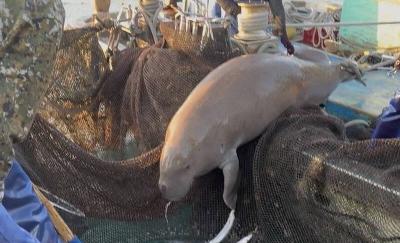Taipei Zoo has not seen a drop in visitor numbers despite the outbreak of rabies across the nation, zoo officials said yesterday, adding that they have stepped up outbreak control measures to ensure visitors’ safety.
The zoo usually sees about 15,000 to 18,000 visitors during holidays, a number which has remained largely consistent even after the deadly disease was found spreading through wild animal populations last month, zoo spokesman Chao Ming-chieh (趙明杰) said.
Taiwan reported three confirmed cases of rabies infection to the World Organization for Animal Health (OIE) on July 17, ending its 52-year rabies-free status.
As of yesterday, Taiwan had 22 confirmed cases of rabies, comprised of 21 Formosan ferret-badgers and one Asian house shrew.
All carnivorous animals in the zoo have been vaccinated against rabies, Chao said, adding that there is no chance that the animals can come in direct contact with visitors.
Chao said that the zoo has enhanced its control measures, including increased inspections to prevent wild animals and pets from entering the zoo.
Meanwhile, Hong Kong Food and Health Bureau Secretary Ko Wing-man (高永文) said the Hong Kong government is very concerned about the recent reports of rabies cases in Taiwan.
Ko said his bureau is monitoring developments very closely.
Radio Television Hong Kong quoted Ko as saying that there have been no rabies cases reported in Hong Kong for nearly 30 years.
He further said that Hong Kong has a comprehensive rabies prevention and control system in place.
As Taiwan and Hong Kong are near each other and maintain close exchanges, each tends to pay close attention to disease outbreaks in the other.
When severe acute respiratory syndrome (SARS) and H5N1 avian flu outbreaks were reported in Hong Kong in the past, Taiwan also heightened its alert.

The High Prosecutors’ Office yesterday withdrew an appeal against the acquittal of a former bank manager 22 years after his death, marking Taiwan’s first instance of prosecutors rendering posthumous justice to a wrongfully convicted defendant. Chu Ching-en (諸慶恩) — formerly a manager at the Taipei branch of BNP Paribas — was in 1999 accused by Weng Mao-chung (翁茂鍾), then-president of Chia Her Industrial Co, of forging a request for a fixed deposit of US$10 million by I-Hwa Industrial Co, a subsidiary of Chia Her, which was used as collateral. Chu was ruled not guilty in the first trial, but was found guilty

DEADLOCK: As the commission is unable to forum a quorum to review license renewal applications, the channel operators are not at fault and can air past their license date The National Communications Commission (NCC) yesterday said that the Public Television Service (PTS) and 36 other television and radio broadcasters could continue airing, despite the commission’s inability to meet a quorum to review their license renewal applications. The licenses of PTS and the other channels are set to expire between this month and June. The National Communications Commission Organization Act (國家通訊傳播委員會組織法) stipulates that the commission must meet the mandated quorum of four to hold a valid meeting. The seven-member commission currently has only three commissioners. “We have informed the channel operators of the progress we have made in reviewing their license renewal applications, and

‘DENIAL DEFENSE’: The US would increase its military presence with uncrewed ships, and submarines, while boosting defense in the Indo-Pacific, a Pete Hegseth memo said The US is reorienting its military strategy to focus primarily on deterring a potential Chinese invasion of Taiwan, a memo signed by US Secretary of Defense Pete Hegseth showed. The memo also called on Taiwan to increase its defense spending. The document, known as the “Interim National Defense Strategic Guidance,” was distributed this month and detailed the national defense plans of US President Donald Trump’s administration, an article in the Washington Post said on Saturday. It outlines how the US can prepare for a potential war with China and defend itself from threats in the “near abroad,” including Greenland and the Panama

A wild live dugong was found in Taiwan for the first time in 88 years, after it was accidentally caught by a fisher’s net on Tuesday in Yilan County’s Fenniaolin (粉鳥林). This is the first sighting of the species in Taiwan since 1937, having already been considered “extinct” in the country and considered as “vulnerable” by the International Union for Conservation of Nature. A fisher surnamed Chen (陳) went to Fenniaolin to collect the fish in his netting, but instead caught a 3m long, 500kg dugong. The fisher released the animal back into the wild, not realizing it was an endangered species at